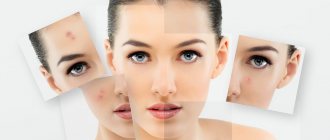Vitamins for women under 30 years old
The body needs vitamin support at any age. But each stage of life requires certain nutrients and in different quantities. Their list changes depending on social and physical activity, health status and a number of other factors.
Most girls after 20 years old begin to build families, give birth to children, and get a job. Therefore, vitamins for girls under 30 should help strengthen the immune system, supply the body with energy, and help fight stress. It is best to choose vitamin complexes. They contain all the necessary substances in the right proportions and help solve several problems at once.
The best vitamins for girls:
- Duovit - recommended for physical and mental stress, unbalanced diet, heavy menstruation, increased sweating. All components of the drug are balanced with each other.
- Lady's formula Antistress - American-made vitamins for girls. Relieves irritability, improves sleep and appetite. Pregnancy and lactation are contraindications for use.
Family, travel, relationships, sports - everything requires strength and vitamins from the body.
After 25 years, there are no fewer things to do, and even vice versa - their number is only growing, and life is in full swing. Many people at this age begin to pay special attention to caring for their appearance.
Vitamins for women under 30 years old:
- Woman's formula - complex contains the best vitamins for hair and skin. It also contains trace elements and plant extracts. Does not cause side effects.
- Alphabet Cosmetic - ensures rapid skin restoration and improves hair growth. Contains flavonoids and trace elements. Do not use if you have hyperthyroidism.
No matter how life “kicks”, it can be easily pacified if you have enough strength.
Vitamin D, what we don't know about it
Murzaeva Irina Yurievna
Endocrinologist, Preventive Medicine Doctor
March 28, 2022
As much as they talk about vitamin D now, they have never talked about it. To write this article, I used very serious literature: the book of Professor O.A. Gromova. Vitamin D, paradigm shift! 568 pp.
This is a serious publication that cites many of the latest studies in this direction. I will not repeat what is well known about vitamin D; I will write about what little is known.
- Vitamin D supports antibacterial, antiviral, and anti-tuberculosis immunity. Vitamin D “the forgotten immunomodulator.”
- Vitamin D (in certain overdoses) is used to treat severe autoimmune diseases (rheumatoid arthritis, multiple sclerosis, myasthenia gravis and others), the scheme was developed by Dr. Cicerone Coimbra (Brazil), called the “COIMBRA protocol”, the minimum doses of vitamin D in this protocol are more than 20,000 -40,000 IU/day, which indicates the high safety of taking vitamin D in smaller doses.
- Vitamin D deficiency may be involved in the formation of hypertension and its normalization may stabilize blood pressure
- Vitamin D deficiency is associated with insulin resistance (the insensitivity of body cells to the proper absorption of glucose) and an increased risk of developing obesity, diabetes mellitus and their complications.
- Vitamin D and progesterone are used in rehabilitation after traumatic brain injuries!
- There are studies revealing the relationship between a lack of vitamin D, resulting in hypercalciuria (increased excretion of calcium in the urine) and a decrease in calcium in the blood, increased excretion of calcium oxalates in the urine and the formation of urolithiasis (urolithiasis), since more than 50% of kidney stones – oxalate!
- Vitamin D deficiency is also associated with iron deficiency anemia! And it makes it worse.
- The antitumor effects of vitamin D in many types of cancer are being actively studied!!!!!
- 90% of children in Russia aged 9-14 years have a deficiency of vitamin D. Its minimum concentration in the blood should be 30 ng/ml.
- As you know, vitamin D is responsible for the metabolism of one of the main elements of human blood - calcium!
There is a concept called “electrolyte cross”:
1st line of the cross Sodium – Potassium balance,
2nd line of the cross Magnesium-Calcium balance - when the balance is disturbed, the homeostasis of all macro- and microelements of the human body suffers. The list of diseases, as a result, is huge...
And that’s not all that can be written about vitamin D.....
The most interesting thing, perhaps, is treatment with vitamin D preparations and the questions that arise in connection with this. Let's arrange a virtual blitz survey 
- Should I take vitamin D all the time? As a rule, yes, Russia “is in the territory of vitamin winter” and is constantly experiencing a deficit in solar activity. This is especially true for the Northwestern region of Russia. In the central and southern regions of Russia, admission can be interrupted for the summer. Children and adults - athletes - should take it constantly - they have a very high need for this metabolite, as well as patients with certain diseases - hypoparathyroidism, chronic renal failure, etc.
- What dose should I take? Officially, there are Russian recommendations for the selection of vitamin D for adults and children, both healthy and those with a decrease in vitamin D (they are freely posted on the Internet). But this is still an individual question; for some people, when taking recommended doses of vitamin D for a long time, its level not only does not restore in the blood, but continues to fall; I will say why below. The Coimbra protocol, which I wrote about above, contains its own therapeutic doses of vitamin D. There is such a thing as a mutation in the vitamin D receptor gene, the VDR gene (I have repeatedly identified it in my patients) and I can say for sure that an increase in vitamin D levels in such In people, it occurs extremely slowly and they may be resistant (not susceptible) to the usual doses of vitamin D that are prescribed to everyone. They can only be “cured” with large doses of vitamin D.
- Why does vitamin D decrease in the blood, and not increase when taking it? There may be several reasons - either a small dose was selected, or it takes longer than usual, not 3-4 months, but up to 1-2 years, for the level to recover. Often the reason is a lack of conductors of vitamin D, vitamin A and vitamin K. Now you can test the levels of these vitamins in the blood, this is available, compensate for their deficiency and improve the absorption of vitamin D, and also a lack of B vitamins.
- Which is better: an aqueous or fatty solution of vitamin D? And this depends on each specific situation - if you are an athlete, or you drink little and you have a violation of bile secretion, cholestasis, then an aqueous solution is better, since more water and bile are needed to absorb the fat solution.
- Which manufacturer is better - Russia or is it better to take an imported vitamin? If you need large doses, more than 10,000 IU per day, then the imported one in capsules is better; with average doses of 2000 IU per day, you can get by with the Russian drug.
- What are these forms of vitamin D - “active form: alfacalcidol, etalfa, oxidevit, etc. Maybe I need such drugs? These forms of vitamin D are created for people with various chronic diseases in whom the conversion of inactive vitamin D into active vitamin D in the body is impaired due to pathology of the liver or kidneys; they are selected only by a doctor and only individually, under control once every 2 weeks (levels of calcium, phosphorus and some other indicators).
- Do I need to monitor my vitamin D level while taking the drug? If you had a significant deviation from the norm, then you should, but if you take a prophylactic dose, then no. I can immediately please you, in our center they began to make vitamin D using the HPLC method - this is a very sensitive and accurate method for determining vitamin D.
- Can pregnant and breastfeeding women take vitamin D? What if there will be calcification of fetal tissues and rapid closure of the fontanel? This is another myth - on the contrary, vitamin D is indicated during pregnancy; it is involved in the formation of anti-tuberculosis, antiviral and bacterial immunity in the child and not only.
- Is it possible to overdose on vitamin D if you constantly take vitamin D in the doses indicated by Russian recommendations? An overdose is excluded, the doses of vitamin D selected there are small, sometimes large doses are indicated for patients due to their condition. So, I think, in order to select doses of vitamin D, it’s time to introduce a new specialty “Vitamin D – Vedologist”
- Who are vitamin D2 preparations indicated for? For patients with impaired liver and kidney function, in whom the conversion of this vitamin in the body is impaired, for skin diseases, it will work better, also for 1-2 degree burns, etc. It is produced in Russia under the name Ergocalciferol and is commercially available. Vitamin D in most laboratories is determined only in the form of 25-OH-vitamin D3, but in some cases this is not the most reliable metabolite of vitamin D in the body. For some diseases: renal failure, obesity, etc., a comprehensive assessment of vitamin D metabolites in the blood is required in order to correctly determine vitamin D deficiency and the correctness of its treatment.
Comprehensive assessment includes:
- 25-OH D2 (25-hydroxyergocalciferol)
- 25-OH D3 (25-hydroxycholecalciferol)
- 1,25-OH D2
- 1,25-D3 dihydroxycalciferol)
- 25-OH D in the blood.
A change in D3 (1,25-dihydroxycalciferol) will indicate a disturbance in vitamin D metabolism at the kidney level.
Changes in 25-OH D3 (25-hydroxycholecalciferol) - decreased metabolism at the liver level.
Change in 25-OH D2 (25-hydroxyergocalciferol) - decrease in its formation in the skin (lack of solar insolation)
25-OH D is the most “sensitive” metabolite and accurate, reflecting the circulation of vitamin D in the blood.
In which case, to determine all metabolites of vitamin D in the blood, and in which separately, the doctor decides.
To be continued …..
Vitamins for women 30-40 years old
Women over 30 are exposed to constant stress related to raising children, careers, and there are more and more things to do. At the same time, the first health problems appear: for example, irregular nutrition at a young age can affect the condition of the gastrointestinal tract. Also at this age, expression lines appear, so it is important to provide the body with substances that improve skin condition. These are fat-soluble vitamins (A, B, E, C, B), collagen, zinc, sulfur, silicon, calcium and iron.
Experts recommend
- Velwomen is a foreign drug containing all the complex of useful substances necessary for the female body. The reproductive system, which after 30 years of age needs additional stimulation, will receive special support.
- Lady's formula Woman 30 Plus - each capsule contains vitamin supplements, herbal extracts, selenium and magnesium. The balanced formula allows you to remove toxins, normalize your complexion, and improve your well-being.
These same drugs are considered by experts as the best vitamins for women over 35 years of age.
You may not even know about a number of problems if the body has enough resources to deal with stress and more.
Prevalence of atopic dermatitis in children
It is safe to say that this disease can occur in any country, in both males and females. Dermatitis occurs in different age categories. The prevalence of AD is higher in residents of economically developed countries, which may be due to the urban lifestyle of this population. According to the protocol for the treatment of AD in children, the prevalence of this pathology in the Russian Federation ranges from 6 to 15% according to ISSAC. ISAAC is a standardized epidemiological study - the International Study of Asthma and Allergy in Childhood. Repeated studies within the framework of this program show a significant increase in the prevalence of AD in children of the Russian Federation.
Research shows a significant increase in the prevalence of atopic dermatitis in children in the Russian Federation.
Also, the expert committee on asthma and allergy of the WHO European Bureau developed and approved another program - GA2LEN. GA2LEN (Global Allergy and Asthma European Network) studied the incidence of allergic pathology among adolescents aged 15 to 18 years. According to the study, the presence of symptoms of AD occurred in 33% of adolescents, the prevalence of AD according to questionnaires was 10%, and a confirmed diagnosis was found in 7% of adolescents. Girls have 1.5 times more than boys.
Vitamins for women from 40 to 50 years old
Performance decreases, sometimes emotional breakdowns occur. The first signs of menopause appear. This is due to hormonal changes in a woman’s body. In order to support the body during this “restructuring”, it is necessary to receive enough vitamins and minerals, which are often lacking in regular food, not to mention poor nutrition.
What are the best vitamins for women over 40 to take to support the body?
Doctors advise:
- Vitrum Beauty Elite - to maintain immunity and normalize lipid metabolism. The substances included in its composition stimulate collagen production and improve skin condition.
- Lady's formula Woman 40 Plus is a vitamin and mineral supplement that improves metabolism and skin condition. Prevents obesity and has a positive effect on the genitourinary system.
No matter what happens in a woman’s life, she always needs a complete set of vitamins.











